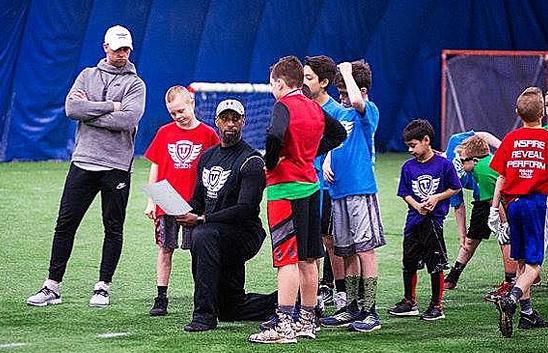Since the inception of Team Works Sports Academy in 2013, it has been our mission to use sports and performance training as a vehicle to build teamwork and leadership abilities, to enhance fitness and health, shape values, improve sports skills and more importantly develop friendships and a passion for all sports.
We live in a day and age where adults – coaches, parents and sports trainers are pressuring kids to show “commitment” by specializing in one sport. Pushing them to play in multiple games / tournaments each weekend while the adults are busy obsessing over all-state teams, scholarships and pro contracts.
When you consider the overuse injuries, emotional burnout and research studies that reveal that kids who specialize in a single sport don’t have a better chance of earning a college scholarship, the question becomes, “Why are we doing this to our kids?”
I’ve been training and coaching student-athletes for the better portion of my career, working with athletes ranging from 9-16 from every sport, so I’m fairly confident I have the experience (10+ years) to chime in on such a steamy topic.
So let’s do this 🙂
3 Things to Consider When Training Youth Athletes
#Early Sports Specialization is NOT the answer.
Yep, I said it. And I am pretty adamant on this point.
Nothing derails a young athlete’s development more – both mentally and athletically – than being a one-sport-wonder.
When I was kid growing up my parents had me in one a sport for every season. Now, it is debatable whether this was on purpose or just to keep me out of the house, but whichever the reason, I one hundred percent believe that playing a variety of sports throughout the year allowed me to excel in soccer, which is what I ended up playing in college.
Playing multiple sports helped me to develop a variety of athletic abilities and made me not just a better soccer player, but a better athlete and teammate. Moreover, it kept me open minded, healthy and prevented me from developing overuse injuries that are quite common in sports like baseball.
I stress these points with every young athlete and soccer player that goes through my program. Playing more of the same game is not the answer. It saddens me when I start working with a youth athlete and I ask him or her which sports he or she plays, and they respond with “soccer” or “football.”
The numbers don’t lie: 92% of NFL Draft – rounds 1-3 – were multiple sport athletes in high-school.
And I have to assume that that stat mirrors other leagues such as MLB, NBA, and the NHL.
#Kids Are Not Professional Athletes
There’s zero need to get fancy with kids in the weight-room. They need to learn how to move, sprint, throw and jump.
Many people are quick to ask how “so and so (insert any elite athletes name, Steph Curry, Tom Brady) trains?” or “what program is he or she using?” The implication being….do what they’re doing and you’ll get the same results.
Smh. It doesn’t work like that…
The better question might be “what did they do 10 – 15 years ago to help set the foundation that allowed them to succeed further down the road?”
Listen, Dad. Speed work and agility drills at this stage are kinda like giving a Volkswagon Jetta a sweet paint job and rims to give it the appearance of being fast. However, until we address the horsepower – i.e., work on the basics, mechanics & getting stronger – it’s still going to be a Volkswagon Jetta.
Youth athletes need Goblet Squats and to learn how to perform a push up well, not parachute resisted sprints, flipping enormous tires and CrossFit.
#Sport-Specific Training Does Not Exist
There’s no such thing as a “soccer-specific program” or a “football-specific exercise.” I understand there are some exceptions to this, but for all intents and purposes the statement is true.
Ask anyone of our student-athletes, they hear it all the time; “Our end goal is to make you a better athlete.” To immerse he or she in an environment that allows them to explore all facets of movement and motion.
If you have ever caught our training videos and clips on Facebook or Instagram you will observe that we never go out of our way to emulate what’s accomplished on the field or court. Athletes get enough “sport specific training” playing their respective sport(s).
Our time with our athletes is used as a tool to marinate kids in movements and exercises they’re not accustomed to; to address weaknesses and build resiliency; to help build confidence and self-esteem; and, you know, ultimately to make their competition wish they didn’t show up.




